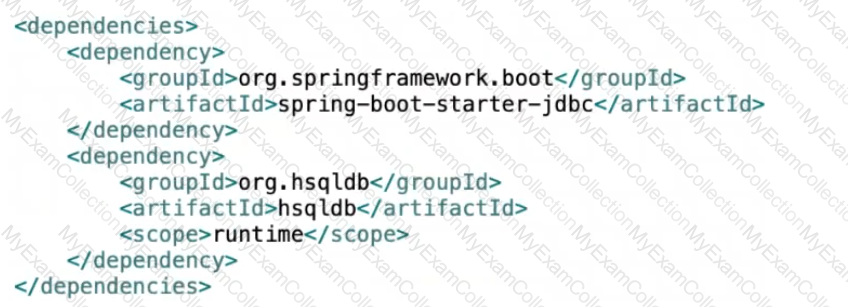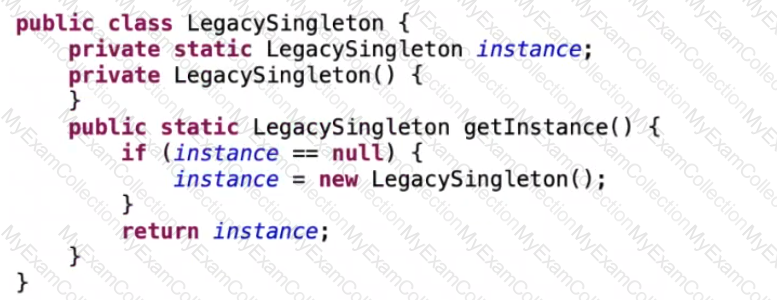Which two options are valid optional attributes for Spring’s @Transactional annotation? (Choose two.)
Which two options will inject the value of the daily.limit system property? (Choose two.)
Which two statements are true regarding the RestTemplate class? (Choose two.)
Spring Boot will find and load property files in which of the following? (Choose the best answer.)
Which two statements are correct regarding the Actuator info endpoint? (Choose two.)
Which statement describes the @AfterReturning advice type? (Choose the best answer.)
Which two statements are true regarding Spring and Spring Boot Testing? (Choose two.)
Which strategy is correct for configuring Spring Security to intercept particular URLs? (Choose the best answer.)
Which option is true about use of mocks in a Spring Boot web slice test? (Choose the best answer.)
Which two statements are correct when @SpringBootApplication is annotated on a class? (Choose two.)
Given an ApplicationContext containing three bean definitions of type Foo with bean ids foo1, foo2, and foo3, which three @Autowired scenarios are valid and will allow the ApplicationContext to initialize successfully? (Choose three.)
Which two annotations are meta-annotations on the @SpringBootApplication composed annotation? (Choose two.)
Refer to the exhibit.

Which two statements are correct regarding auto-configuration of DataSource and JdbcTemplate beans given a Spring Boot application with only these two dependencies? (Choose two.)
If a class is annotated with @Component, what should be done to have Spring automatically detect the annotated class and load it as a bean? (Choose the best answer.)
Which three types of objects can be returned form a JdbcTemplate query? (Choose three.)
Refer to the exhibit.

How can a Spring Bean be created from this LegacySingleton class?

